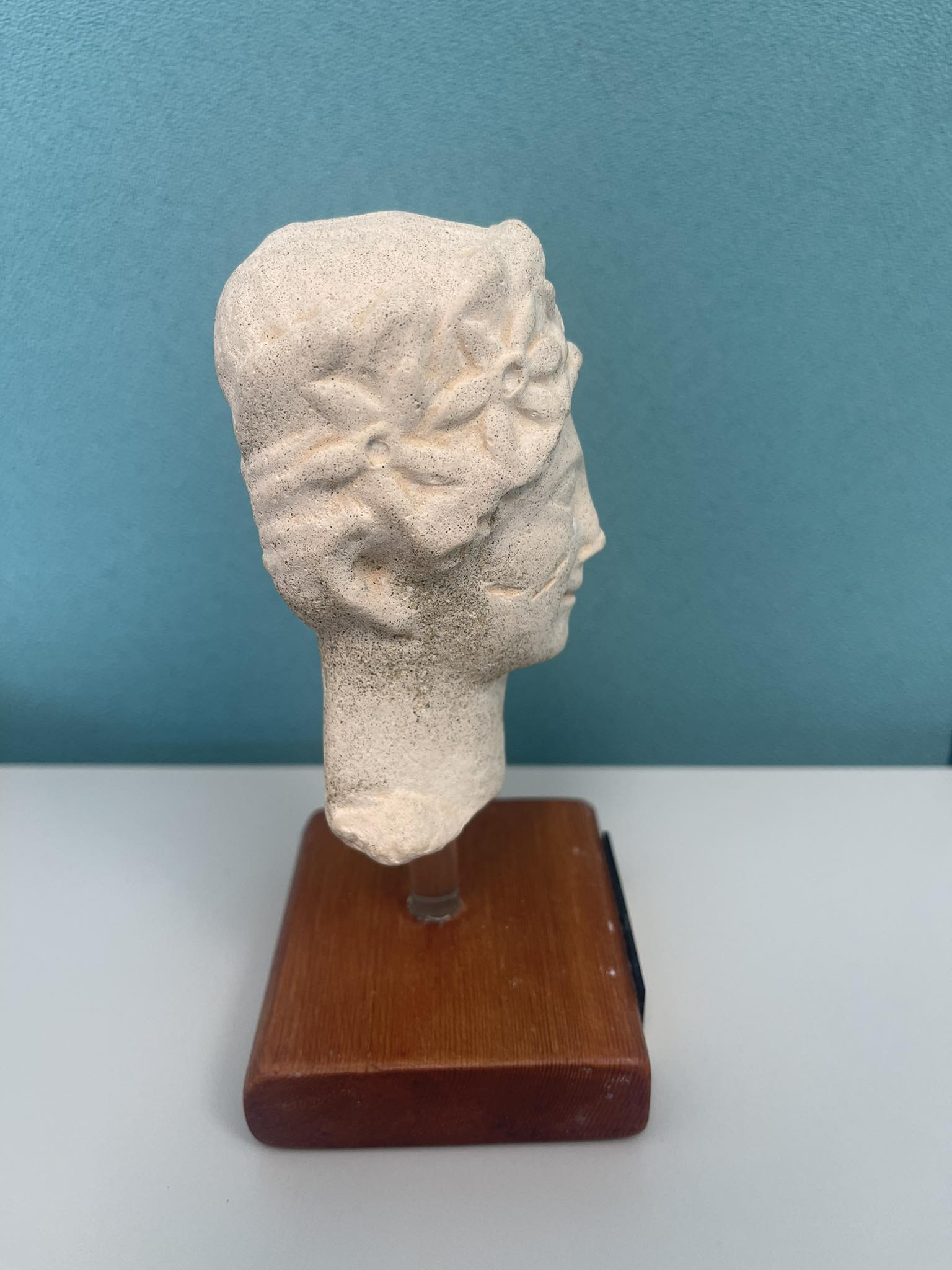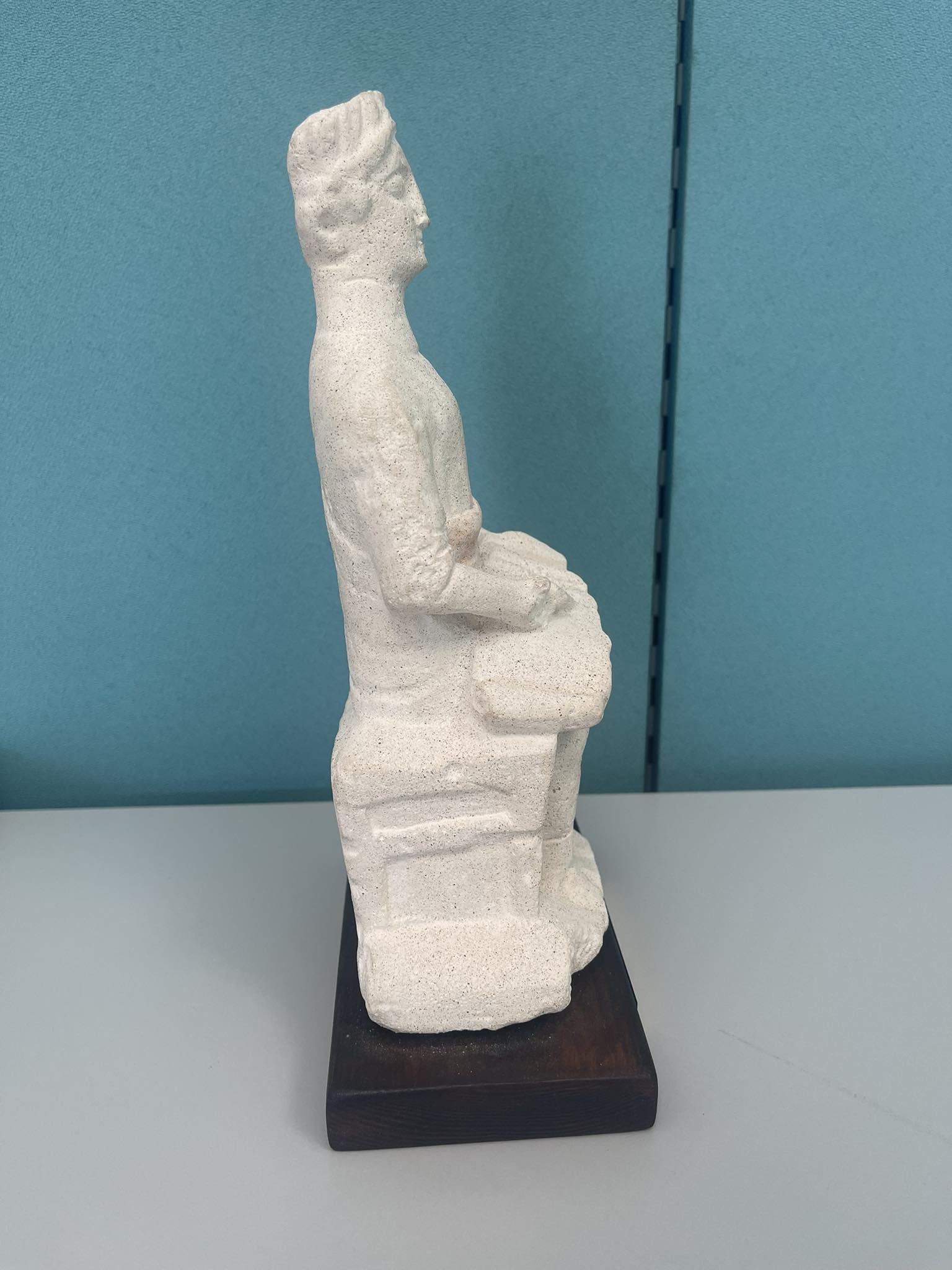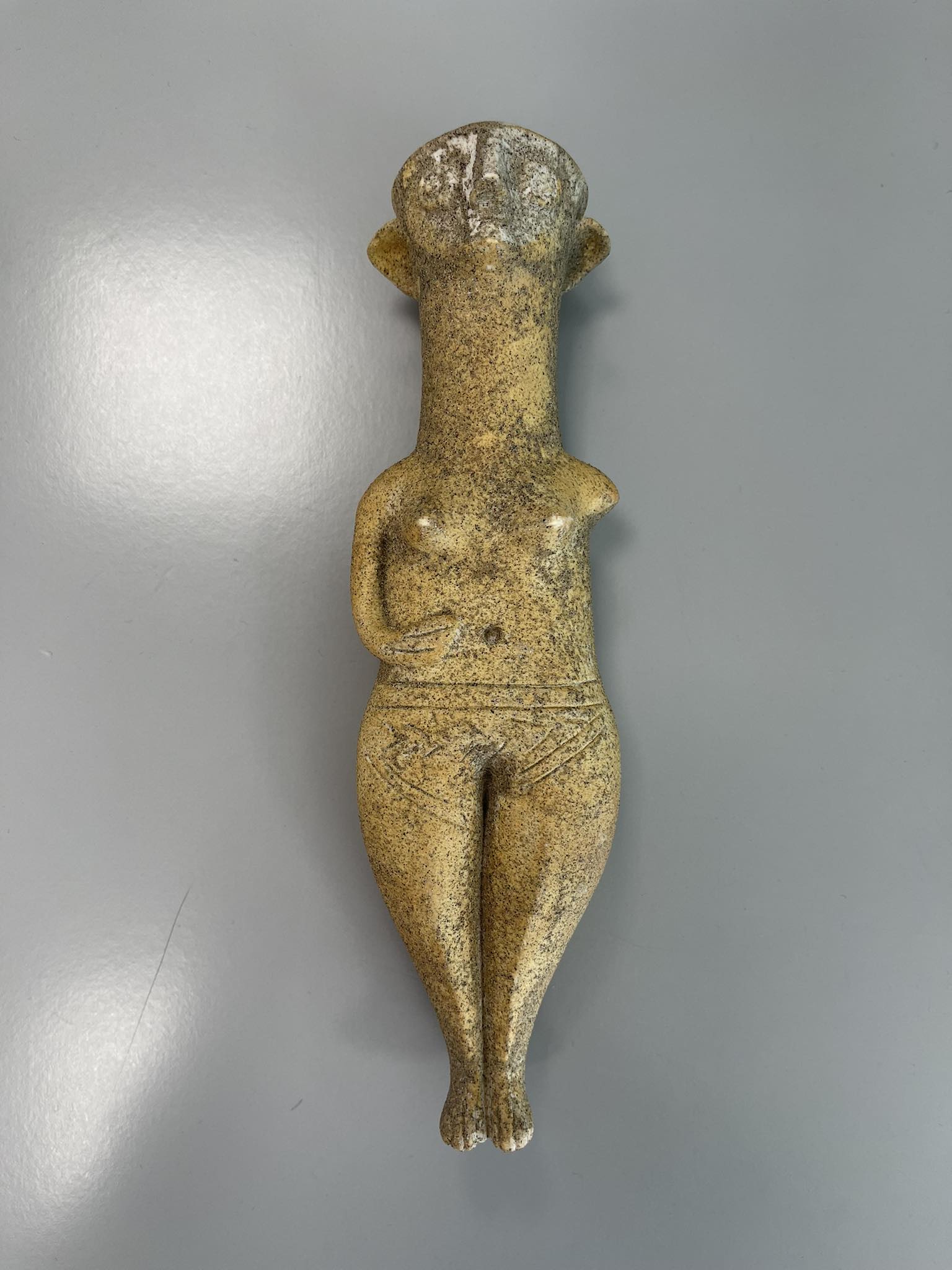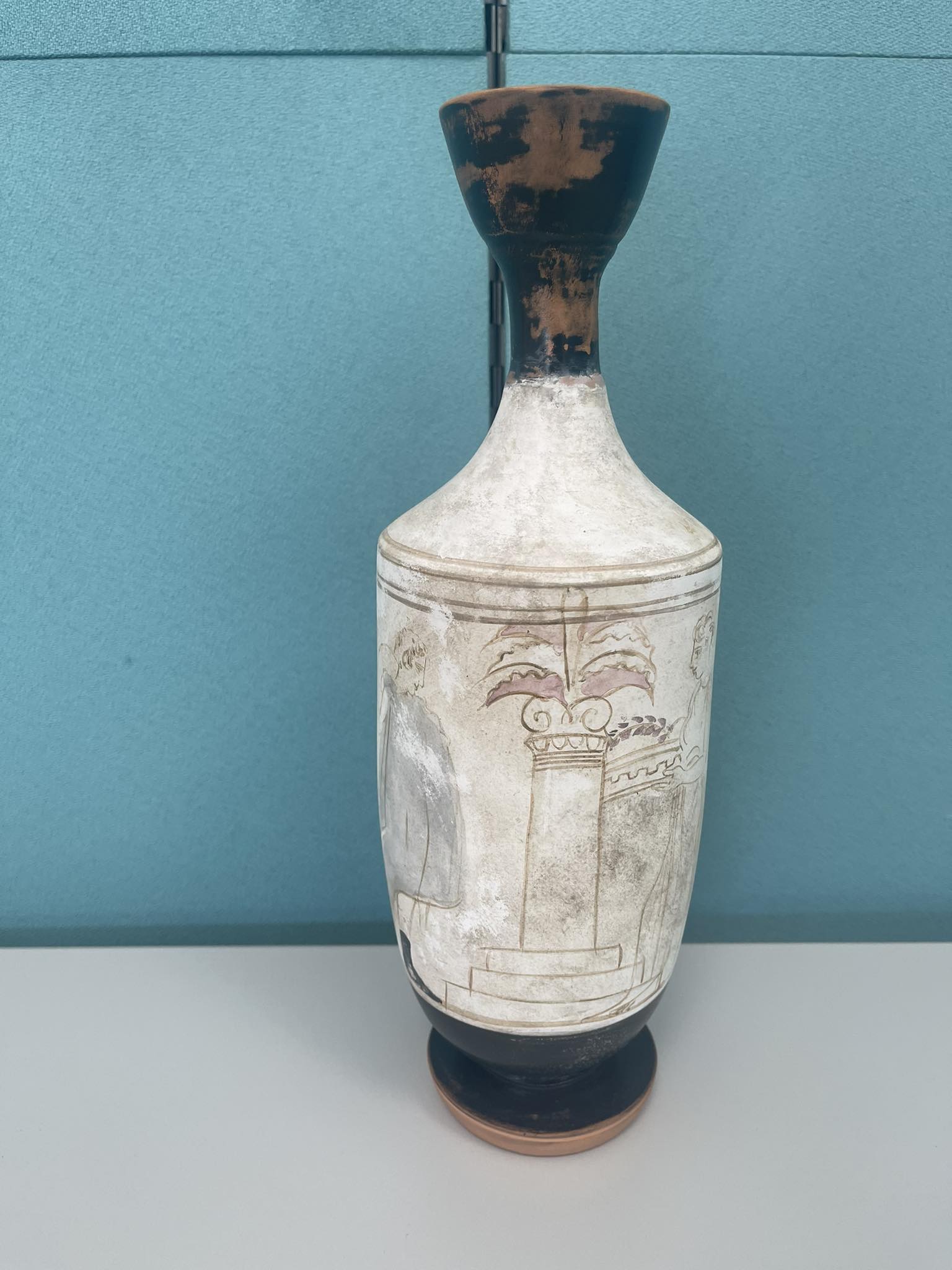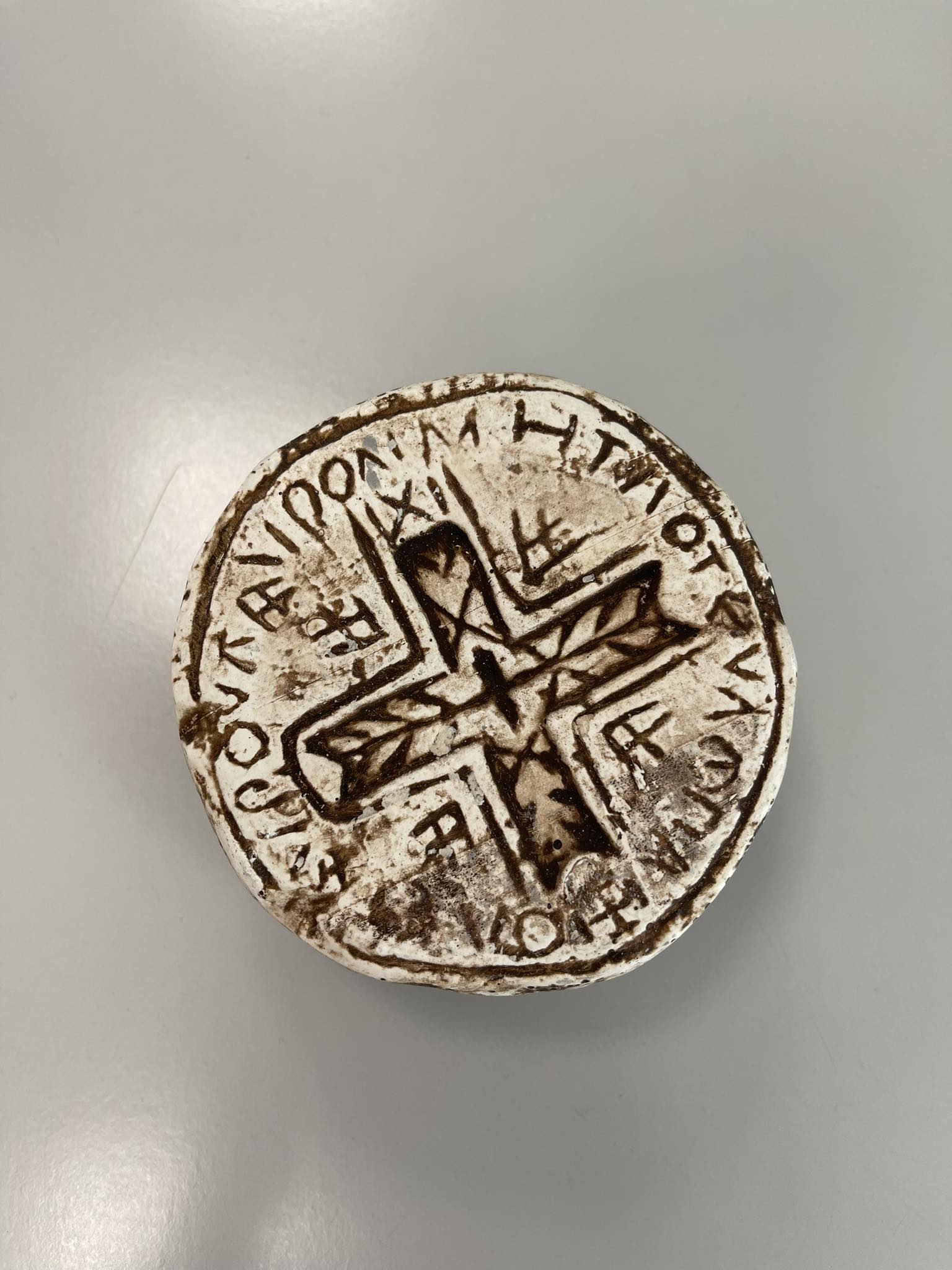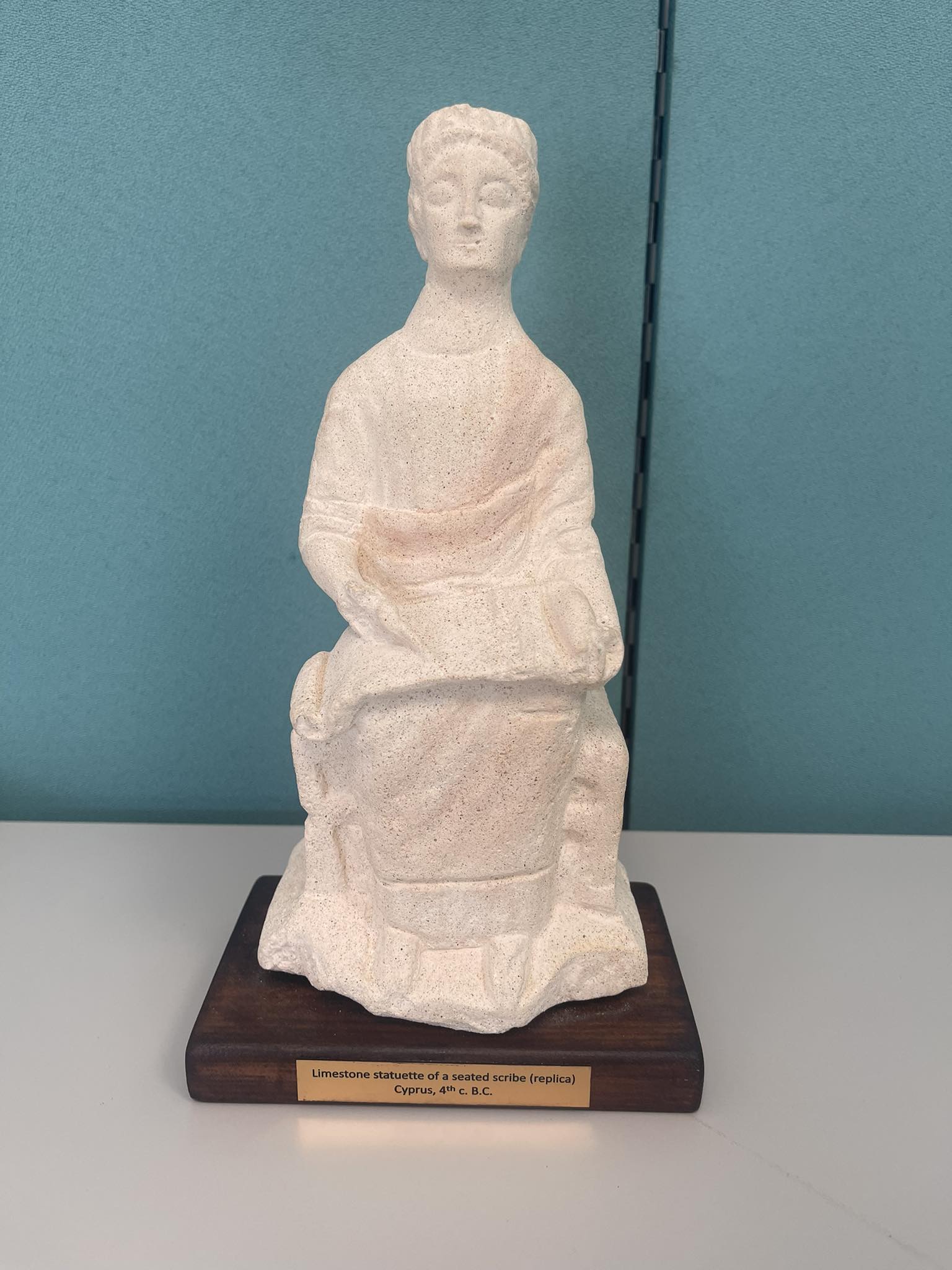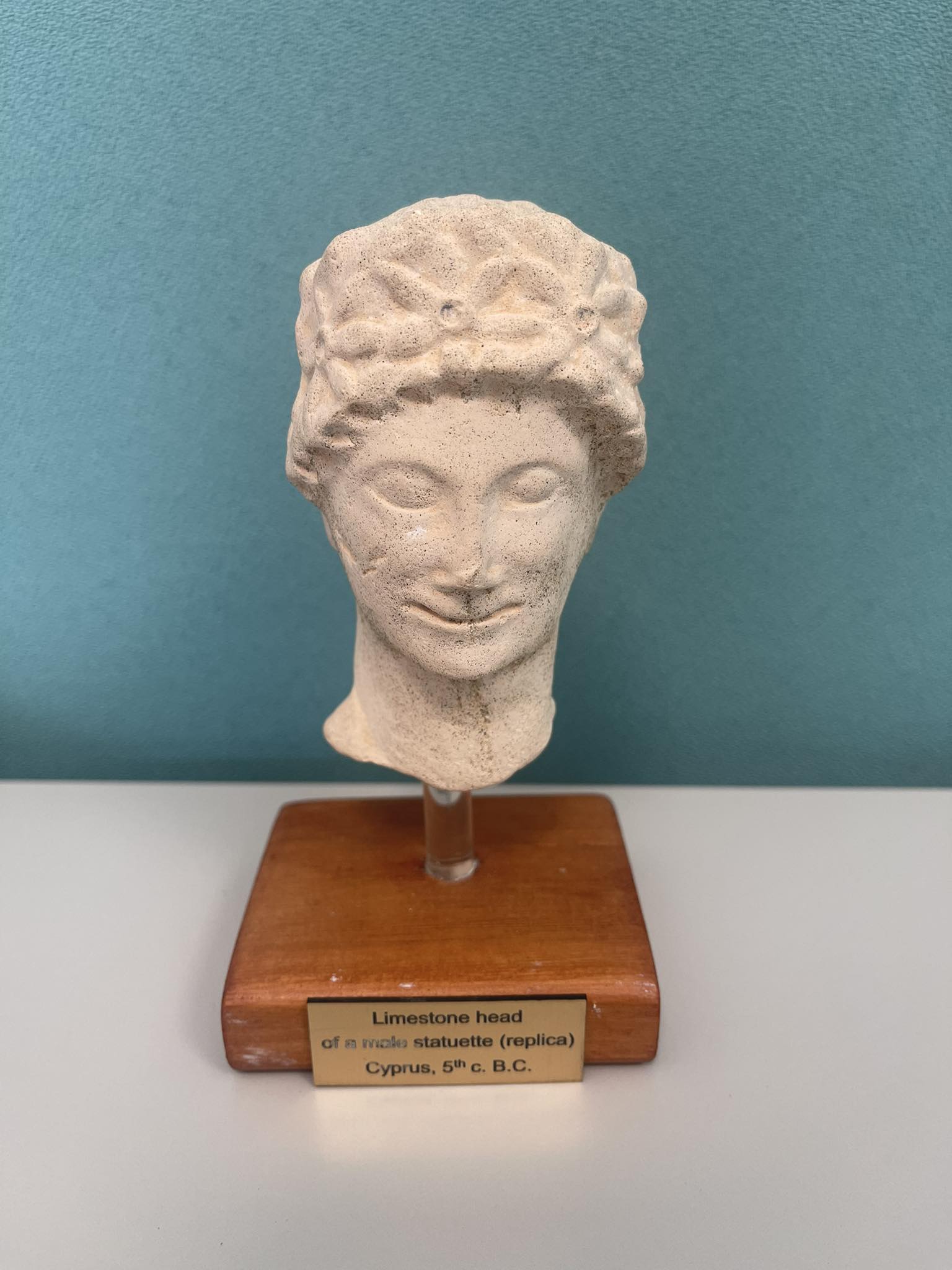The original project funded by ICOM-UK was to visit the Bank of Cyprus Cultural Foundation (BOCCF) in Nicosia, Cyprus to learn about their educational programmes, to witness how visitors engage with the collection, and to develop joint projects.
“Cyprus in 3D” is the name of the project that we started at the Ure Museum to highlight our Cypriot holdings. Although we house around 100 artefacts, we focused on 9 terracotta figurines of the Kamelarga style from Kition that date to the Cypro-Archaic period (750-480 BC) and represent worshippers holding food, animals, shields and musical instruments. Traditionally, these figurines have been interpreted as ex-votos, however, due to the loss of their archaeological context, there are many questions yet to be answered. Since our educational programme heavily relies on active and experiential learning, we decided to 3D scan and print these figurines to encourage their handling and see how people would react to them. Thus, we hosted a series of outreach activities to test these replicas as didactic resources, but we are still exploring better ways to utilise them in our educational sessions at the Ure Museum.
That is why we addressed the BOCCF, which holds the Museum of History of Cypriot Coinage and the Museum of George Nefeli Giabra Pierides. Their educational programmes seem to provide a wide range of experiences for different audiences and encourage personal meaning-making and long-term retention of ideas. We intended to develop a joint project so we could learn from each other’s collections and pedagogies.
As the recipient of the ICOM-UK travel grant, the Education officer expected to meet with Cypriot educators and curators from the BOCCF to get a better understanding of the themes covered in their programmes, understand the display criteria, assess the interaction of visitors with the collection and see which objects attract their interest, witness school sessions or educational activities for different audiences, and understand how inclusion and diversity are expressed in their educational programmes. Hopefully, that would have eventually improved our understanding of Cypriot art and archaeology relevant to the Ure collection, provided a channel to disseminate Cypriot heritage outside Cyprus, and offered a starting point to discuss issues such as shared heritage, imperialism, and decolonisation.
The pandemic, however, hampered this proposal given the reduced number of flight connections and the dramatic increase in travelling costs. Nonetheless, the digital offer provided by the Ure Museum and the BOCCF over that difficult time, allowed us to develop an online relationship, establishing this new arena as a fruitful environment to re-design the project. ICOM-UK kindly agreed to turn the original collaboration into an online undertaking.
While “Cyprus in 3D” at the Ure Museum focused on 3D printing a series of figurines of the Kamelarga style (750-480 BC), the BOCCF was also experimenting with replicas made of limestone, terracotta, plaster, and clay, as well as replicas made of filament – some plastic and some with texture spray in order to emulate the real textures of objects. Thus, the new project proposed to deliver a series of online tutorials to our Cypriot colleagues to introduce the use of 3D technologies in museum didactics with the hope of creating a “new” joint online collection to promote the development of shared educational activities. Both institutions rely on similar pedagogies, such as object-based learning, storytelling, theatrical activities, etc., which encouraged us to develop a joint project to learn from each other’s experiences.
The series of meetings were structured in three parts: 1) An introduction to the use of new technologies at the Ure Museum (RTI-Reflectance Transformative Imaging and Photogrammetry); 2) How the Ure Museum obtained a 3D model of an object; 3) How the Ure Museum used 3D models and 3D printed replicas in the educational offer.
In the first part, the Education officer explained how the Ure Museum experimented with RTI using an Egyptian limestone sketch and a fragment of Greek pottery. I also showed them good and bad examples of 3D models obtained through Photogrammetry and the learning curve that we experienced at the Ure. To learn more, please click here.
In the second part, the Education officer provided her colleagues in Cyprus with a step-by-step tutorial on how to use Zephyr and Agisoft Metashape. She emphasised how time-consuming 3D modelling was, and the importance of setting clear objectives when using photogrammetry as an educational resource. To learn more, please click here.
The third part proved to be especially fruitful since our Cypriot colleagues explained their own needs when it came to educational resources, the challenges they face and how a collaboration between the Ure and the BOCCF could help to make collections and the use of new technologies accessible to all our visitors. BOCCF’s colleagues offered an insightful perspective on how replicas and augmented versions of objects – such as coins, which generally display a miniaturised motif – were used as sensorial resources for those visually impaired. This is an aspect that we have not yet explored in our “Cyprus in 3D”, but that it could be further developed by appealing to a specific sector of our local community in Reading.
Moreover, they pointed out that collaborating with local actors and performers when delivering educational sessions was especially appealing to visitors who wanted to address mental health issues as well as those identified in a vulnerable position. The BOCFF hosts special sessions for those grieving or in a difficult situation, which shows the potential use the collection to tackle social issues.
By introducing multiple points of interaction using sensorial stimulation, BOCCF educators promote accessibility to their collection and offer special experiences to visitors with different learning skills. Thus, creating a “virtual” joint collection and educational programme to accompany it, we will delve into sensorial pedagogies. To learn more, please click here.
